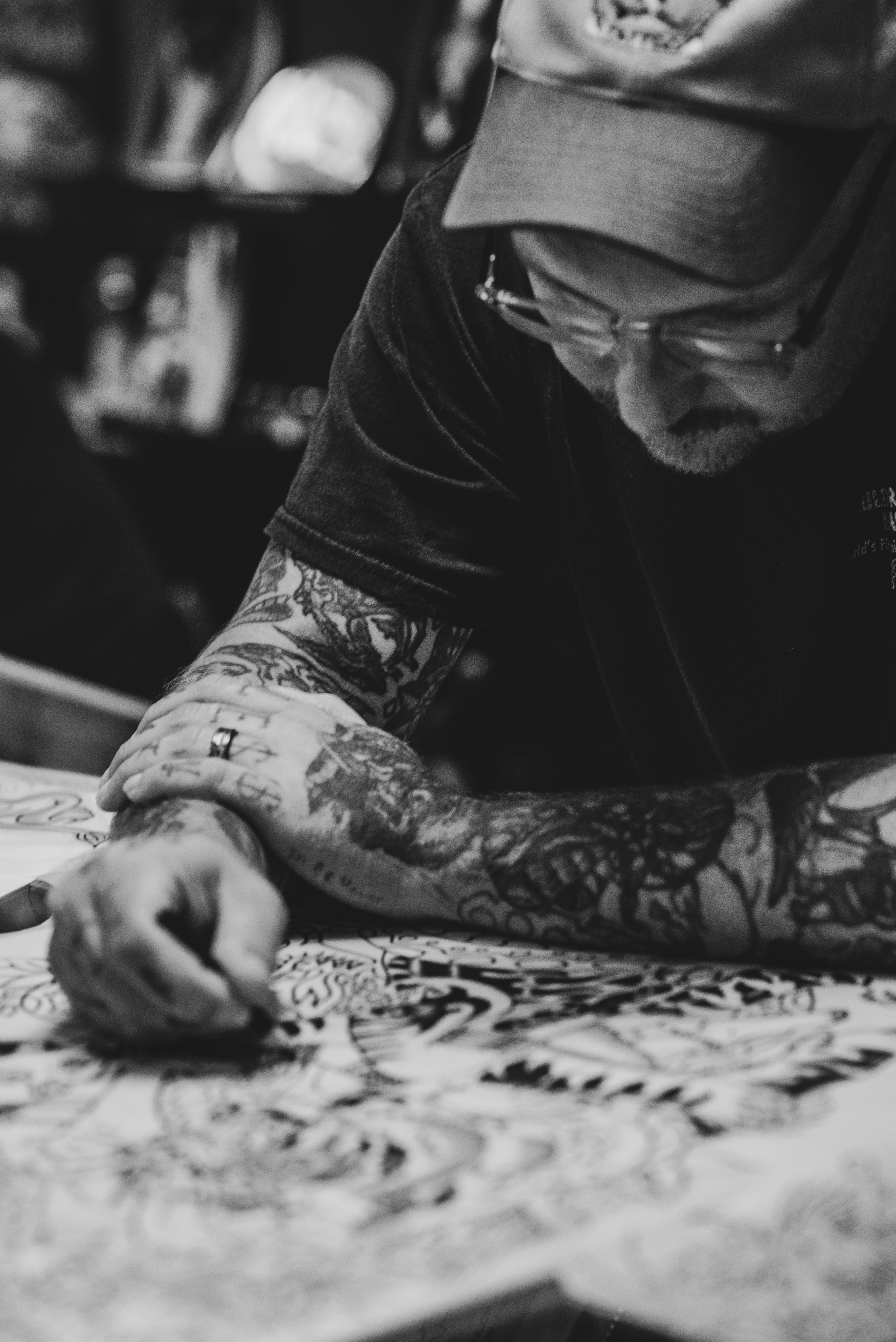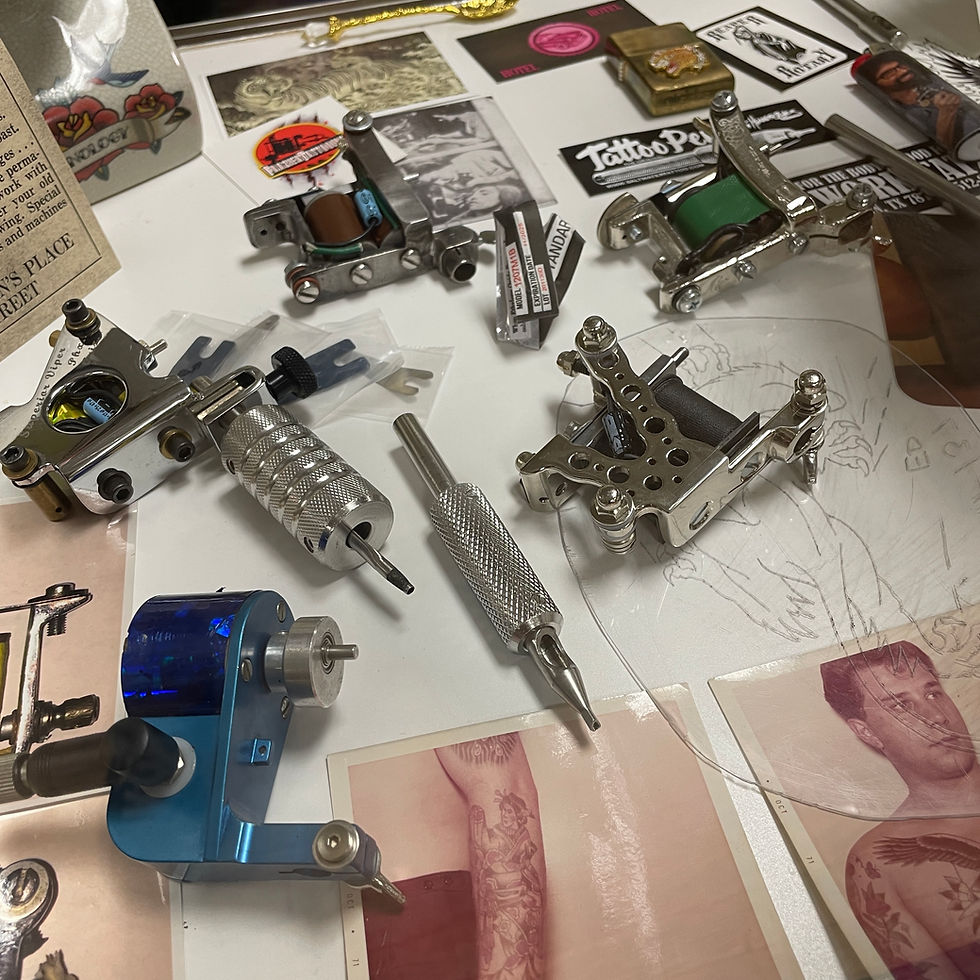Why EO Gas Has No Place in Tattooing – And Why Autoclaves Must Remain the Standard
- Eric Eugene

- Oct 15
- 3 min read
Updated: Oct 20
In tattooing, our tools are everything. They’re the bridge between artist and client, between imagination and skin. That’s why the integrity of how those tools are sterilized is not some small technicality—it’s the foundation of professionalism and safety in our craft.
Yet in recent years, much of our industry has shifted toward relying on ethylene oxide (EO) gas sterilization for disposable needles, cartridges, and other equipment. It’s marketed as “work ready” and convenient. But convenience comes at a cost, and in this case the cost is harmful residue, misleading standards, and the erosion of professional responsibility in tattooing.
⸻
What Is EO Gas and Why Is It Harmful?
EO gas is a chemical sterilant used widely in mass-produced medical devices and tattoo supplies. It works by penetrating packaging and killing microorganisms, but it leaves behind toxic residues—ethylene oxide itself and its byproduct, ethylene chlorohydrin.
• Both are classified as carcinogenic, mutagenic, and genotoxic.
• ISO 10993-7 sets residue limits for medical devices, but these are based on short-term patient exposure—not on repeated, chronic exposure like tattooers face day after day.
• In a tattoo shop, the artist, clients, and even the air in the room can all be exposed to traces of EO gas when blister packs are opened.
This is not speculation—it’s established toxicology. Yet distributors often market EO-sterilized tools as safe without disclosing the health risks.
⸻
The Problem With Relying on Distributors
When we trust distributors to handle sterilization for us, we hand over the professional responsibility that belongs inside the tattoo shop.
• No transparency: Artists are rarely provided with lot-specific residue test results, even though manufacturers claim they exist.
• No control: If sterilization is outsourced, the artist has no way of verifying whether proper degassing occurred or whether unsafe residue levels remain.
• False sense of security: “Pre-sterilized” labels let shops think they’re compliant while exposing everyone to risks that should never have been present.
At the end of the day, the tattooer is the one who faces the client. If a health problem arises, it won’t be the distributor standing behind the work—it will be the artist.
⸻
Why Autoclaves Are the Gold Standard
Autoclaves sterilize with pressurized steam and heat, not toxic chemicals. That makes them safe, repeatable, and verifiable.
• No harmful residues: The process leaves nothing but clean, sterile tools.
• On-site accountability: Tattooers can run their own spore tests and keep logs, proving their equipment is properly sterilized.
• Professional standard: Autoclaves embody the tradition of tattooing as a serious, responsible craft—not a throwaway business of mass-produced disposables.
Every other step of tattooing—design, preparation, application—demands precision and discipline. Sterilization should be no different.
⸻
Why We Want EO Gas Out of Tattooing
Removing EO gas from tattooing isn’t about resisting change or convenience—it’s about protecting our health, our clients, and the integrity of the craft.
• Tattooers deserve to work in safe environments without invisible carcinogens lingering in the air.
• Clients deserve to know their tattoos were done with tools sterilized by methods that leave no toxic residues.
• The profession deserves to uphold standards that are rooted in accountability, not corporate shortcuts.
When tattooers autoclave their own tools, they aren’t just following protocol—they are practicing respect: respect for themselves, for their clients, and for tattooing itself.
⸻
The Path Forward
As an industry, we need to stop normalizing EO gas and disposable culture. We need to return to what has always set tattooing apart when it’s done right: professionalism, responsibility, and care.
Autoclaves aren’t optional—they’re essential. They keep our work safe, our craft honest, and our community strong. The sooner we phase out EO gas sterilization, the sooner tattooing can reclaim the standards it deserves.



are there tattoo needles not sterilized with eo gas? Where would i get such needles?